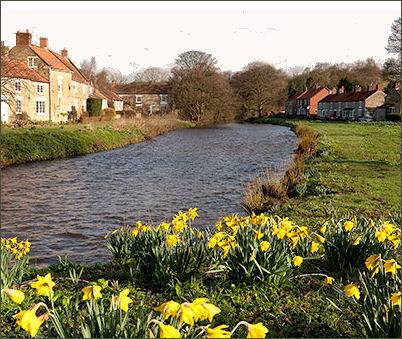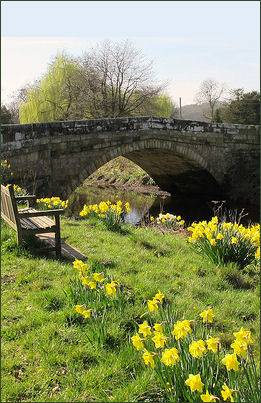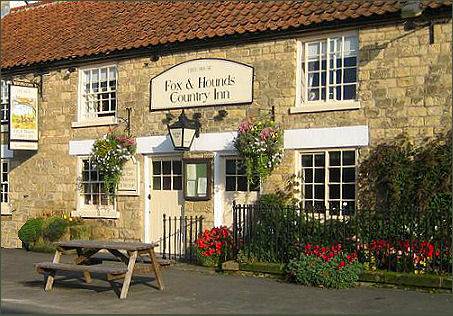Sinnington
OS grid reference:-SE 744 857
 The pretty village of Sinnington lies in attractive countryside on the southern boundary of the North York Moors National Park. Standing just a few miles to the west of the popular market town of Pickering, the village is located just off the A170 road between Pickering and Kirkbymoorside.
The pretty village of Sinnington lies in attractive countryside on the southern boundary of the North York Moors National Park. Standing just a few miles to the west of the popular market town of Pickering, the village is located just off the A170 road between Pickering and Kirkbymoorside.
 Sinnington dates back to Anglo-Saxon times and is listed in the Domesday Book of 1086. The village was held by a succession of Norman lords, latterly the Latimers, the widow of the third Lord Latimer, Katherine Parr, became the sixth and final wife of King Henry VIII. Luckily she survived her formidable spouse.
Sinnington dates back to Anglo-Saxon times and is listed in the Domesday Book of 1086. The village was held by a succession of Norman lords, latterly the Latimers, the widow of the third Lord Latimer, Katherine Parr, became the sixth and final wife of King Henry VIII. Luckily she survived her formidable spouse.
The village is built round its large and attractive green, through which flows the River Seven, which is crossed by a handsome stone bridge (pictured right). A Maypole stands on the village green, which is used on May Day for traditional dancing at the annual May fair.
In the centre of the village green and now standing over a dry ditch is an ancient packhorse bridge, of which only one ring of the arch remains. Portions of the stone causeway approaching the bridge on either side are also visible. A pinfold where stray animals were kept until their owners recovered them, has also survived to the present day..
The medieval cruck-built longhouses in the village were constructed as single storey combined dwelling and animal houses and made of the local Jurassic limestone. Originally they had ling thatched roofs, which were mostly replaced in the nineteenth century with grey slate or red pantiles.
The village church of All Saints', a grade II listed building, is situated near the pleasant village green. It combines a twelfth century structure along with a late Victorian interior. It was probably built on the site of a pre-conquest Saxon church as the building has dozens of fragments of Anglo-Saxon crosses and Viking hogback fragments incorporated in its fabric. These are scattered all over the church, both inside and out.
 It appears that several significant crosses were broken up in order to provide building stone for the twelfth century builders of the church. There are two cross-heads built into the south wall, a carving of a man riding a beast in the porch and several bases of crosses scattered around. There is also a hog-back tomb built into the northern wall.
It appears that several significant crosses were broken up in order to provide building stone for the twelfth century builders of the church. There are two cross-heads built into the south wall, a carving of a man riding a beast in the porch and several bases of crosses scattered around. There is also a hog-back tomb built into the northern wall.
By the church stands an interesting Medieval hall which was built around the late twelfth century. The hall, which is a Grade I listed building, is thought to have been built by Guisborough Priory for the grange which was acquired from Ralph de Clere after 1168. It probably served as an early chapel, a rectory and a tithe barn in later years.
The Fox and Hounds Inn (pictured left) is an old Coaching Inn which dates back to the eighteenth century. The inn has a restaurant and offers en suite accommodation.
The nineteenth century agricultural writer, William Marshall, was born in Sinnington in 1745.
